

The purpose of this project is to honor the history of working women through textiles and hand-colored photographs while also preserving some of the manifestations of their creative handwork. I have added my own hand-decorated, dyed and eco-printed fabrics as well as hand stitching and other embellishments. It is distillation of methods and techniques I have explored over the years. It is also a visual expression of my feminism. The panels vary in size from 14” x 18” to 24” x 40”. The panels are intended to be displayed on a clothesline with clothespins, against a wall. This form of display is an additional commentary on women’s work, the hanging out of laundry.
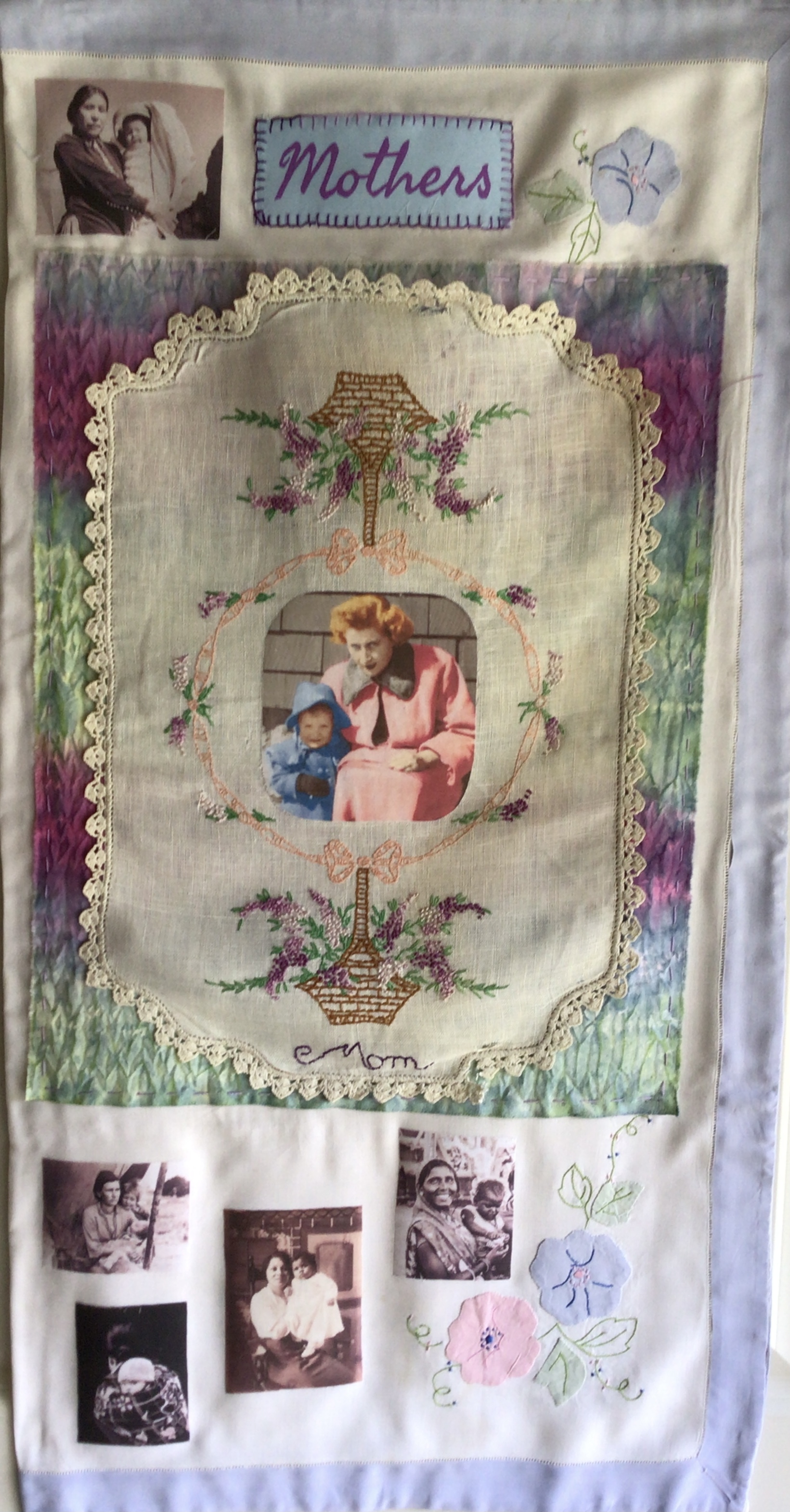
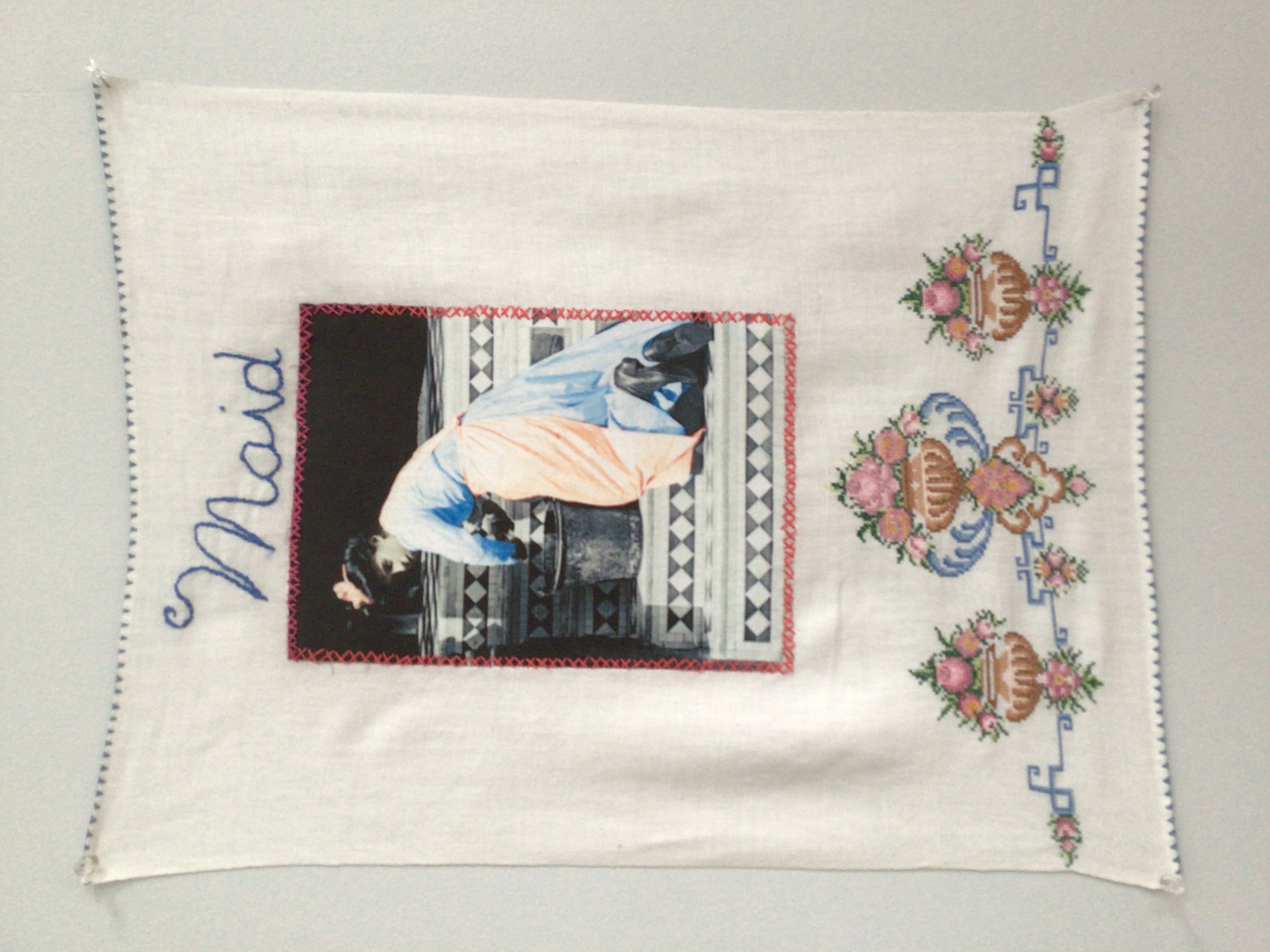
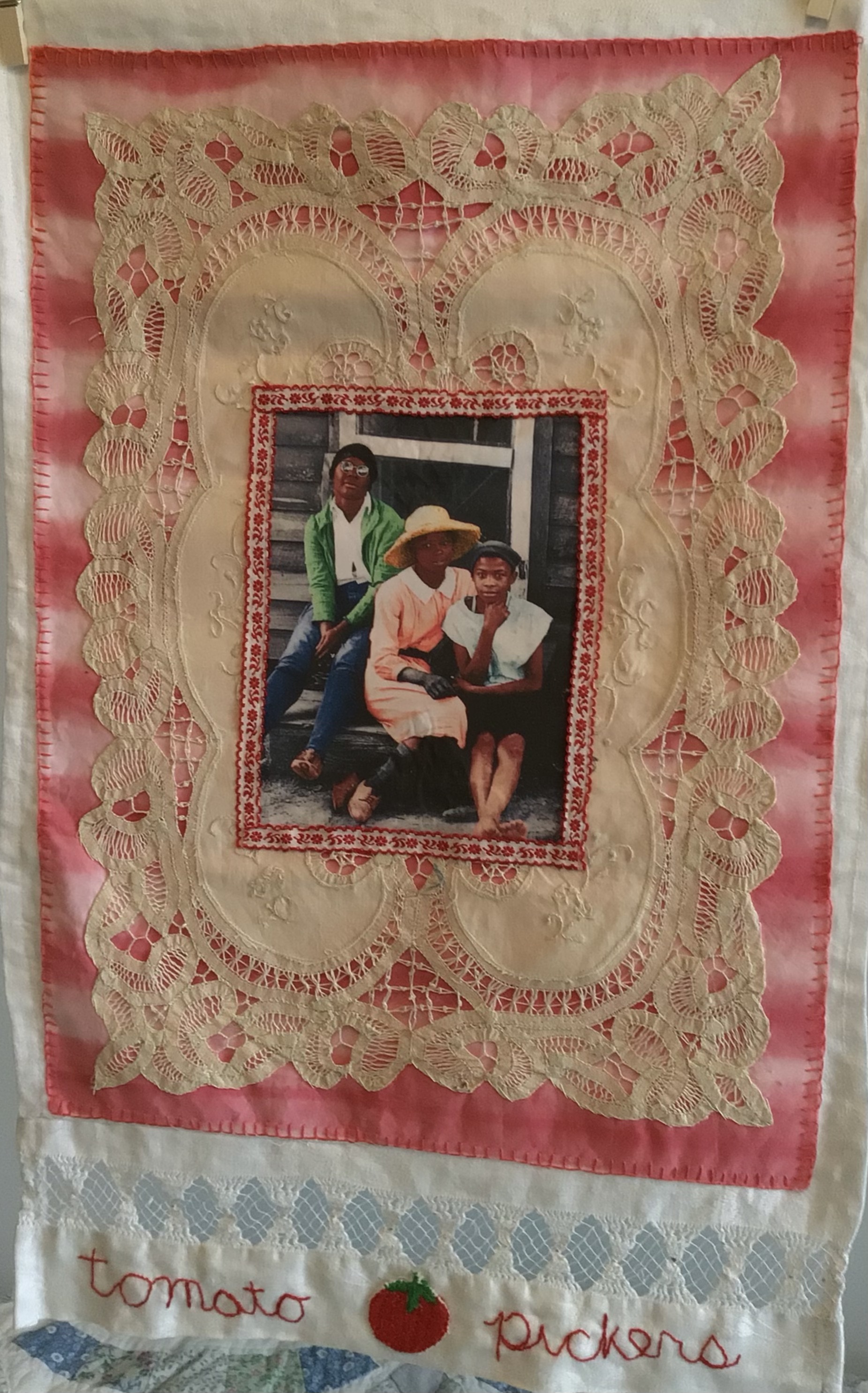
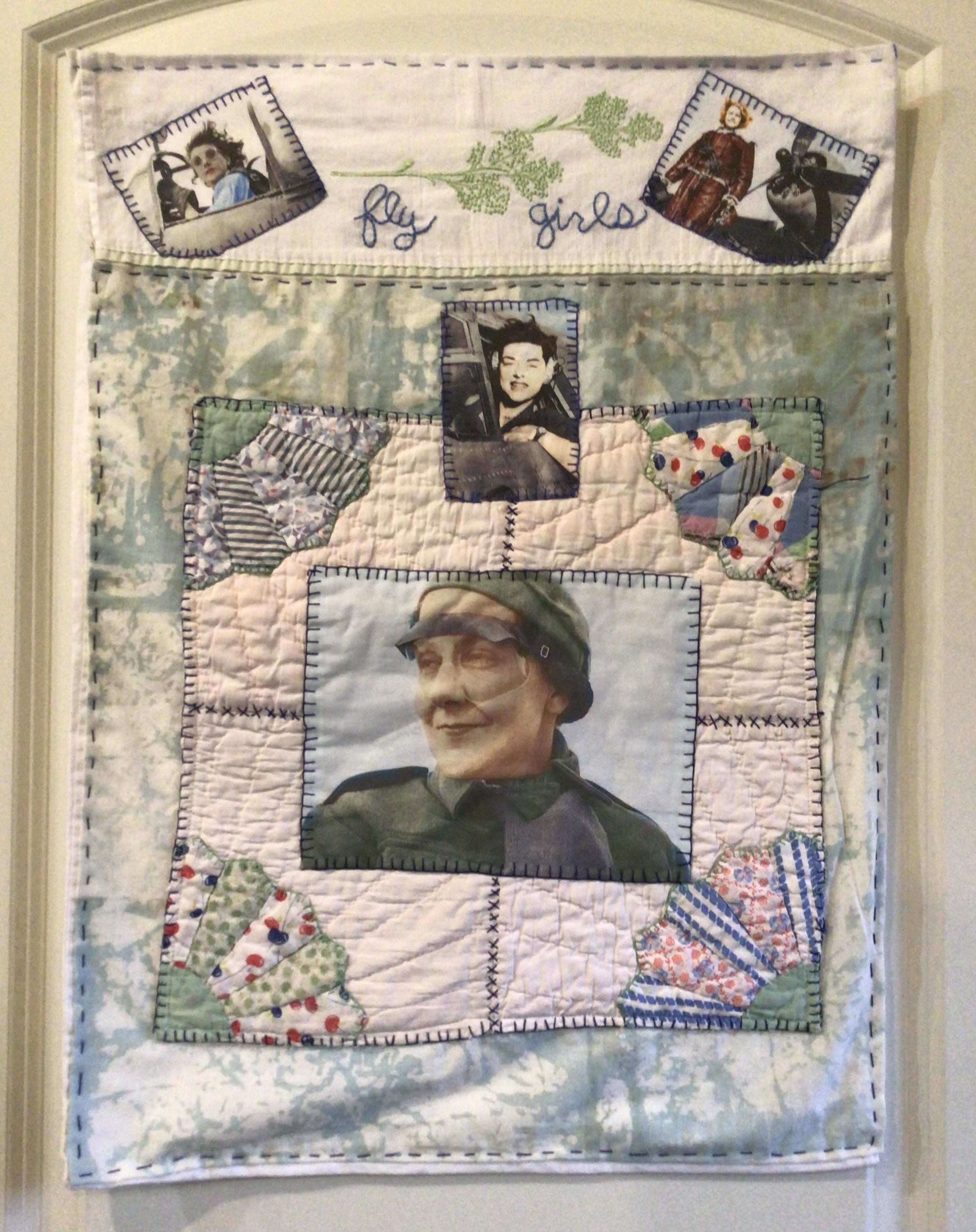

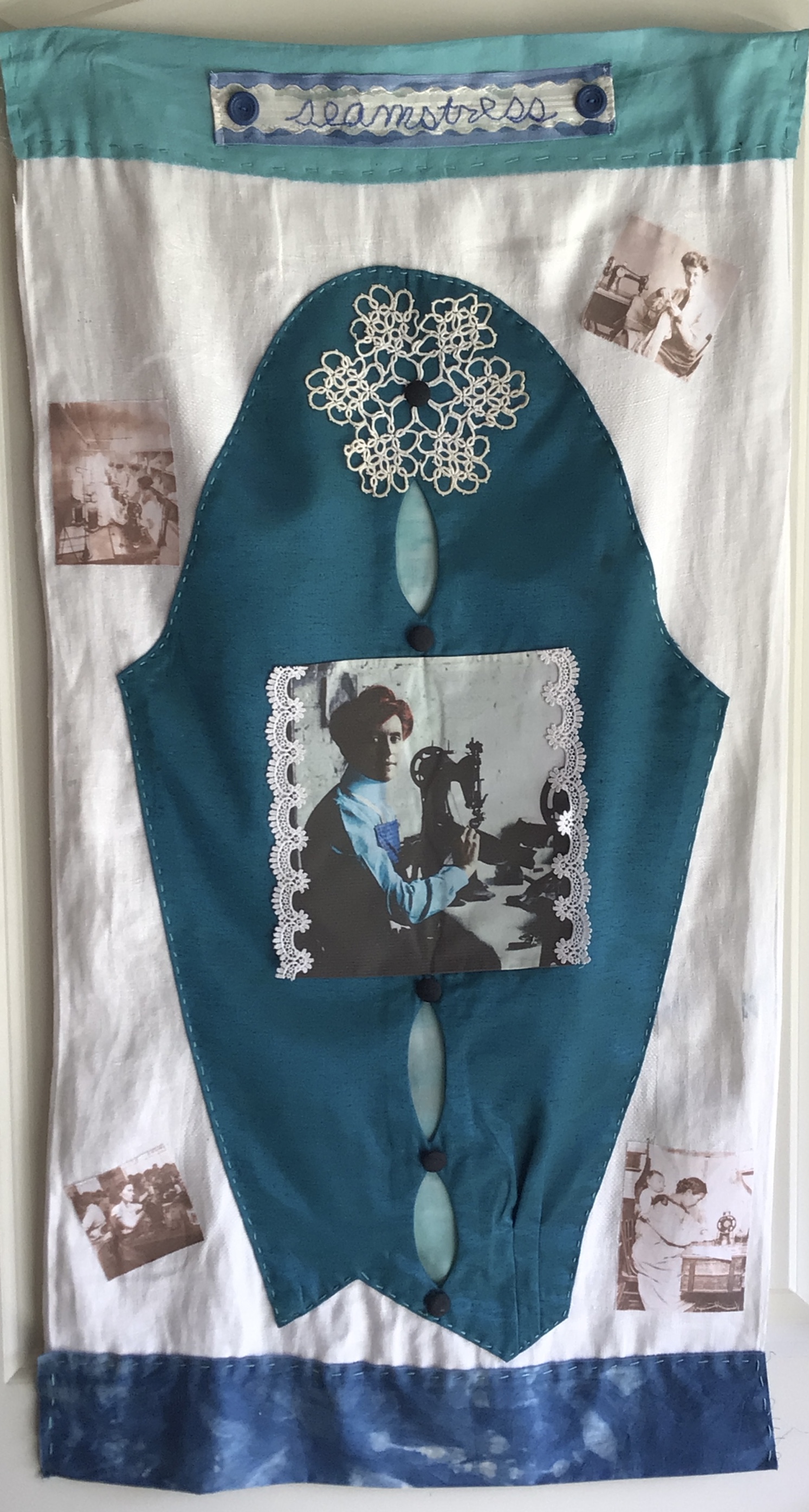
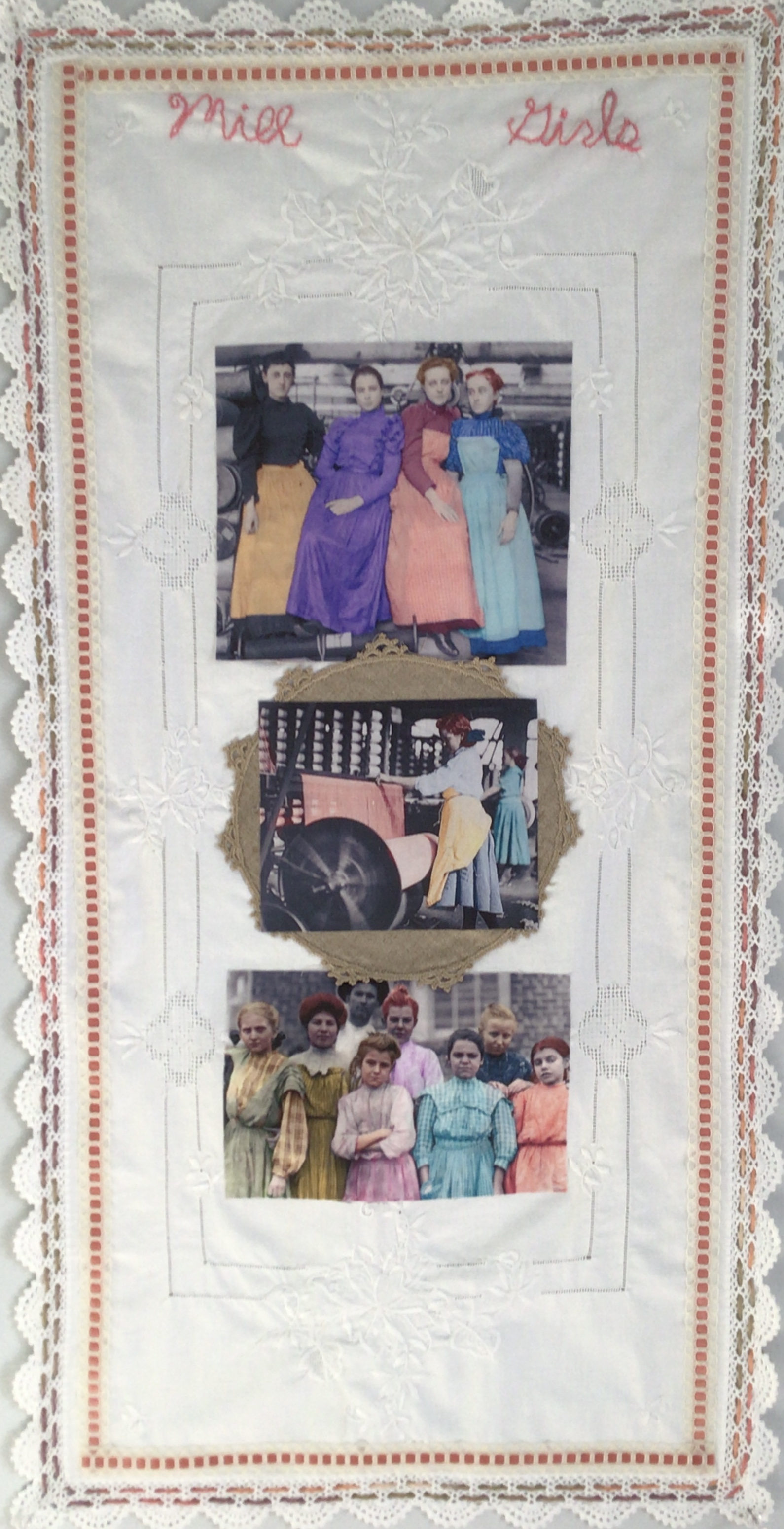
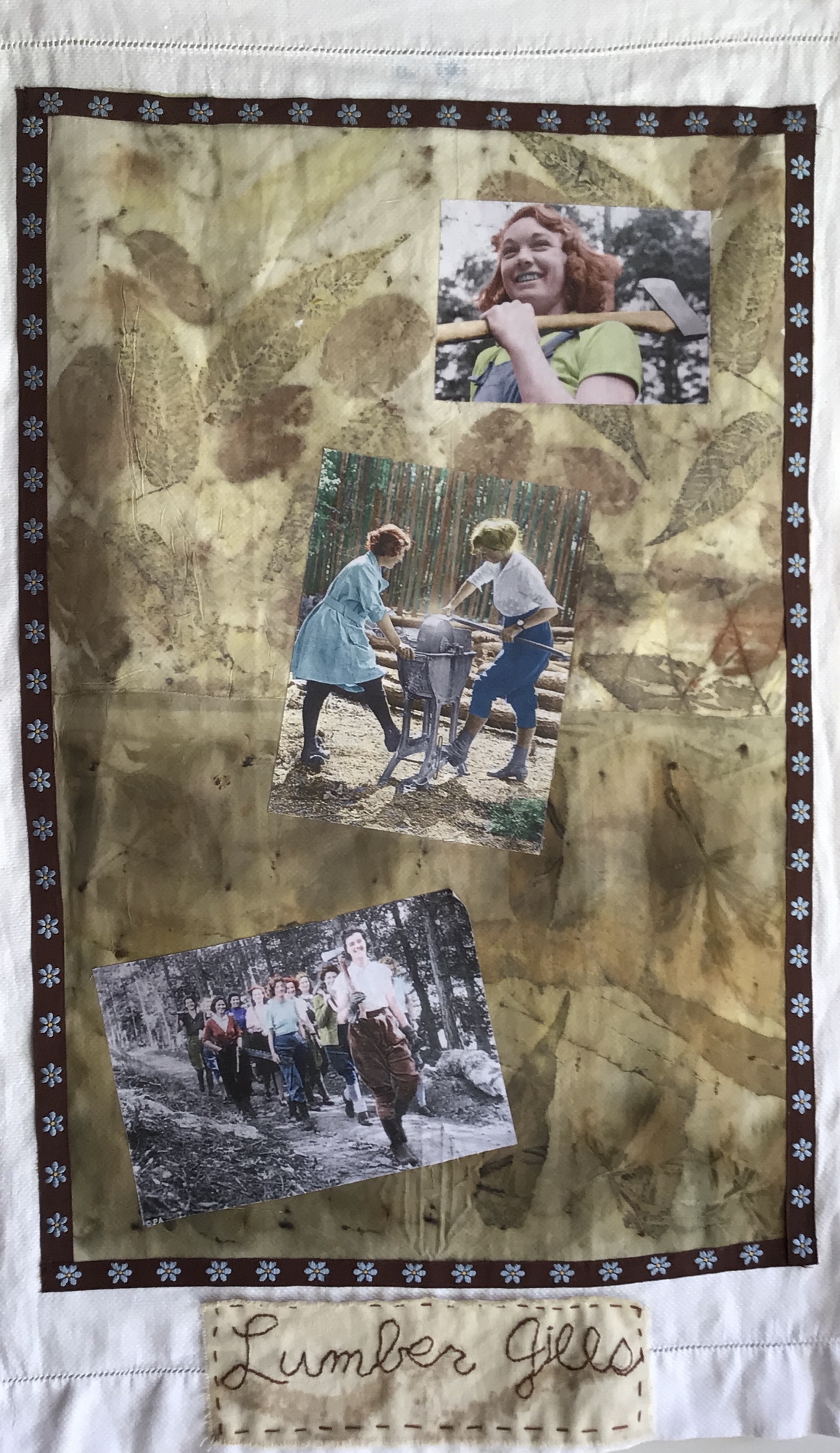
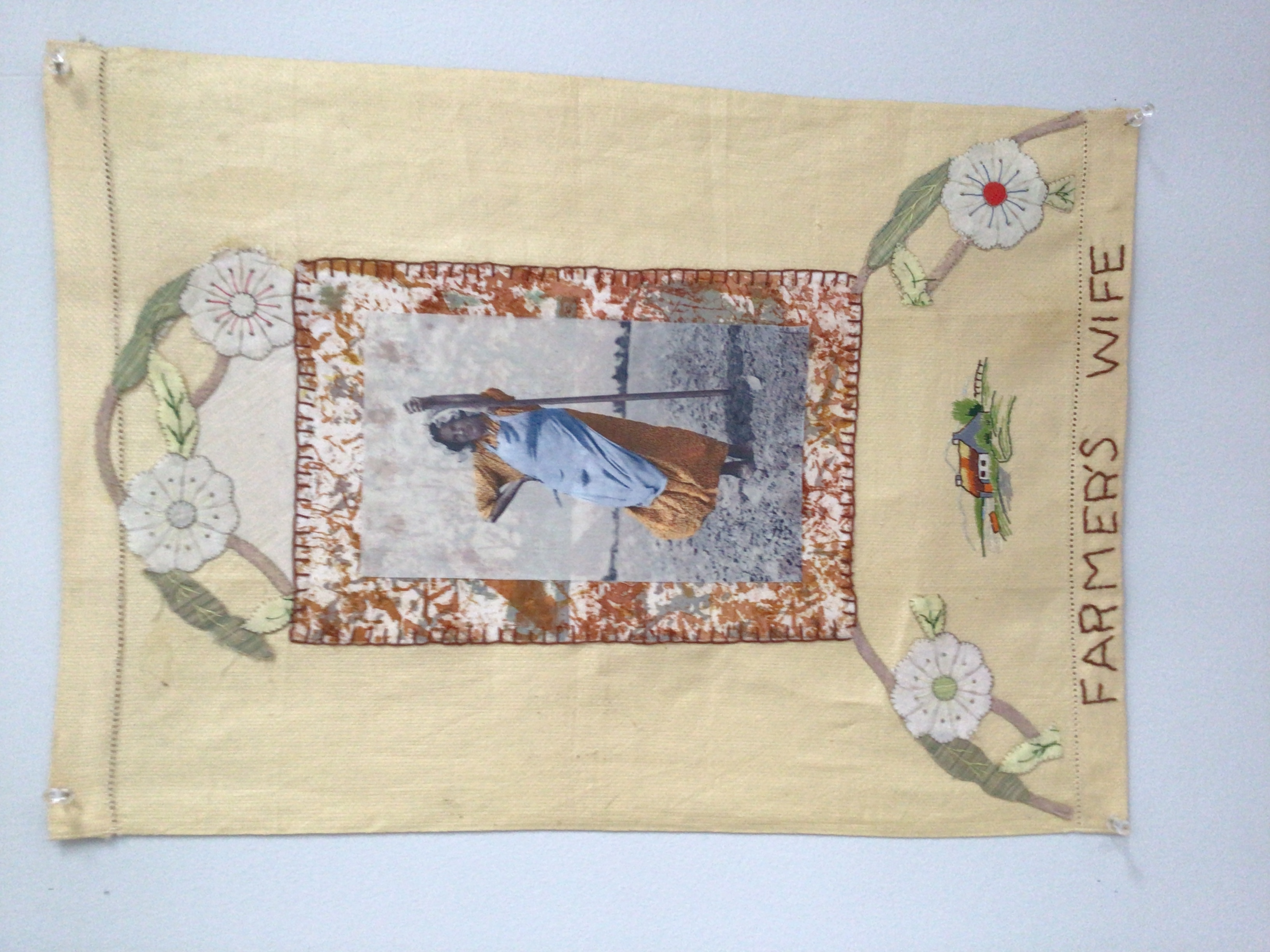
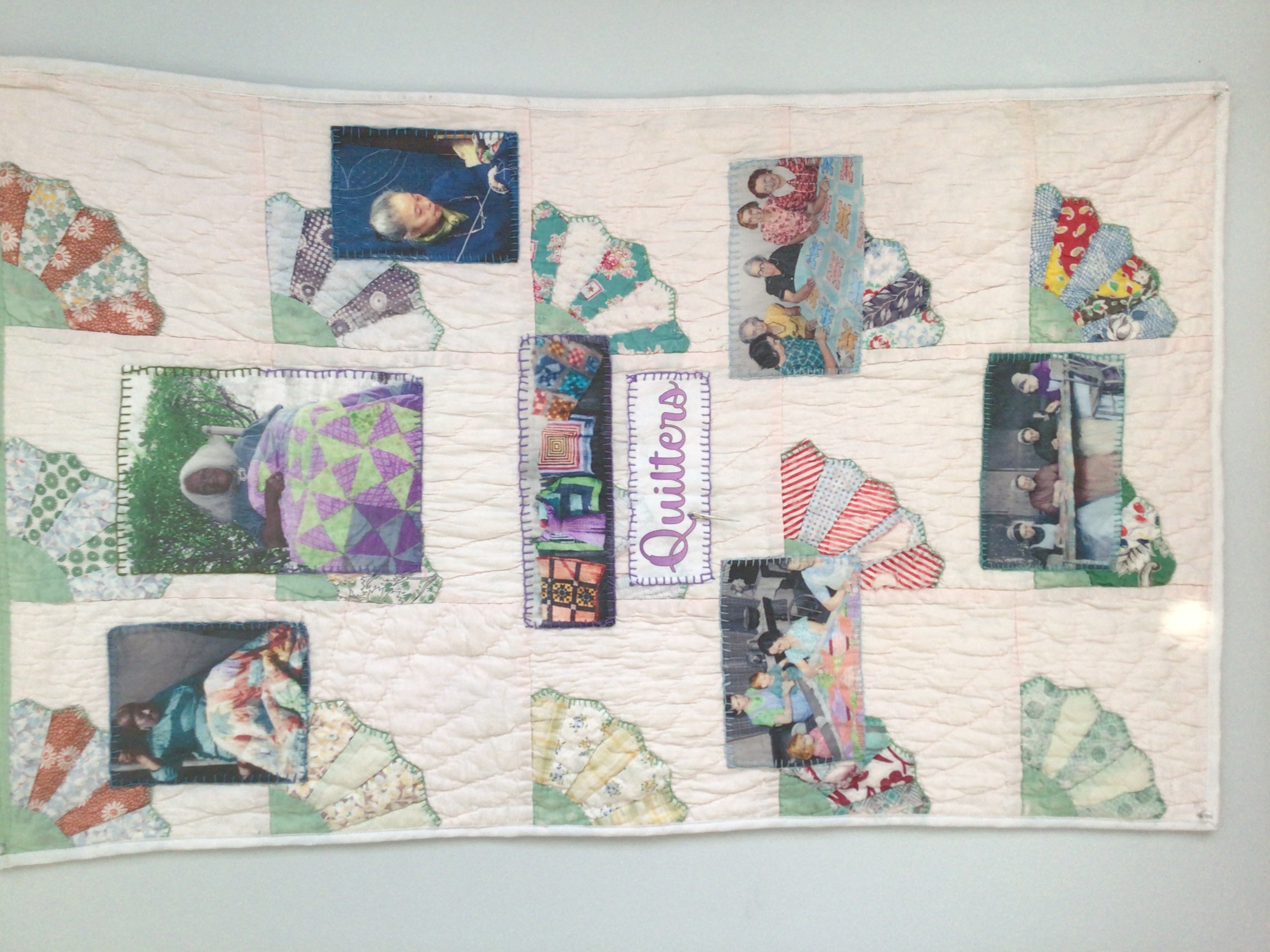

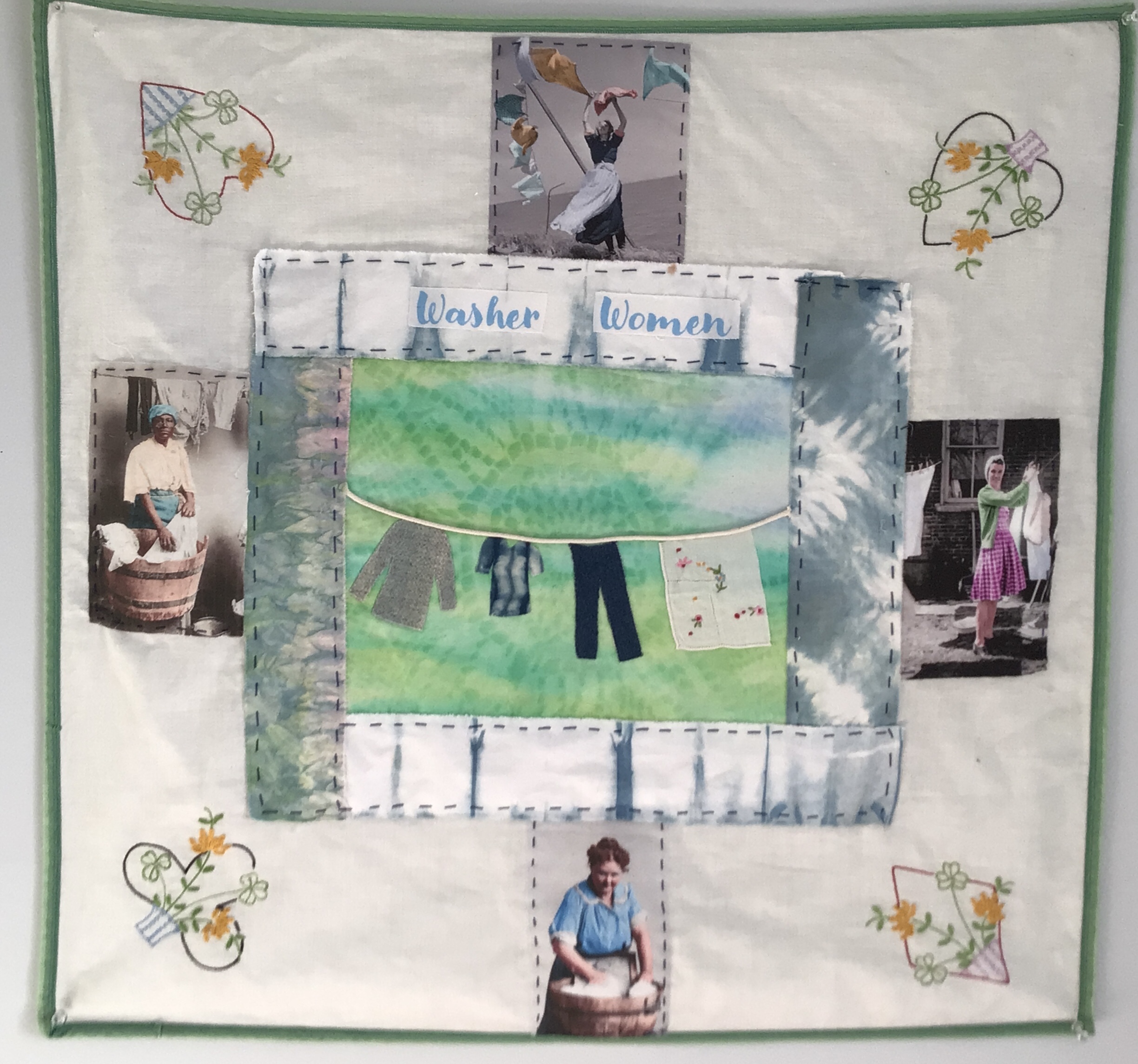



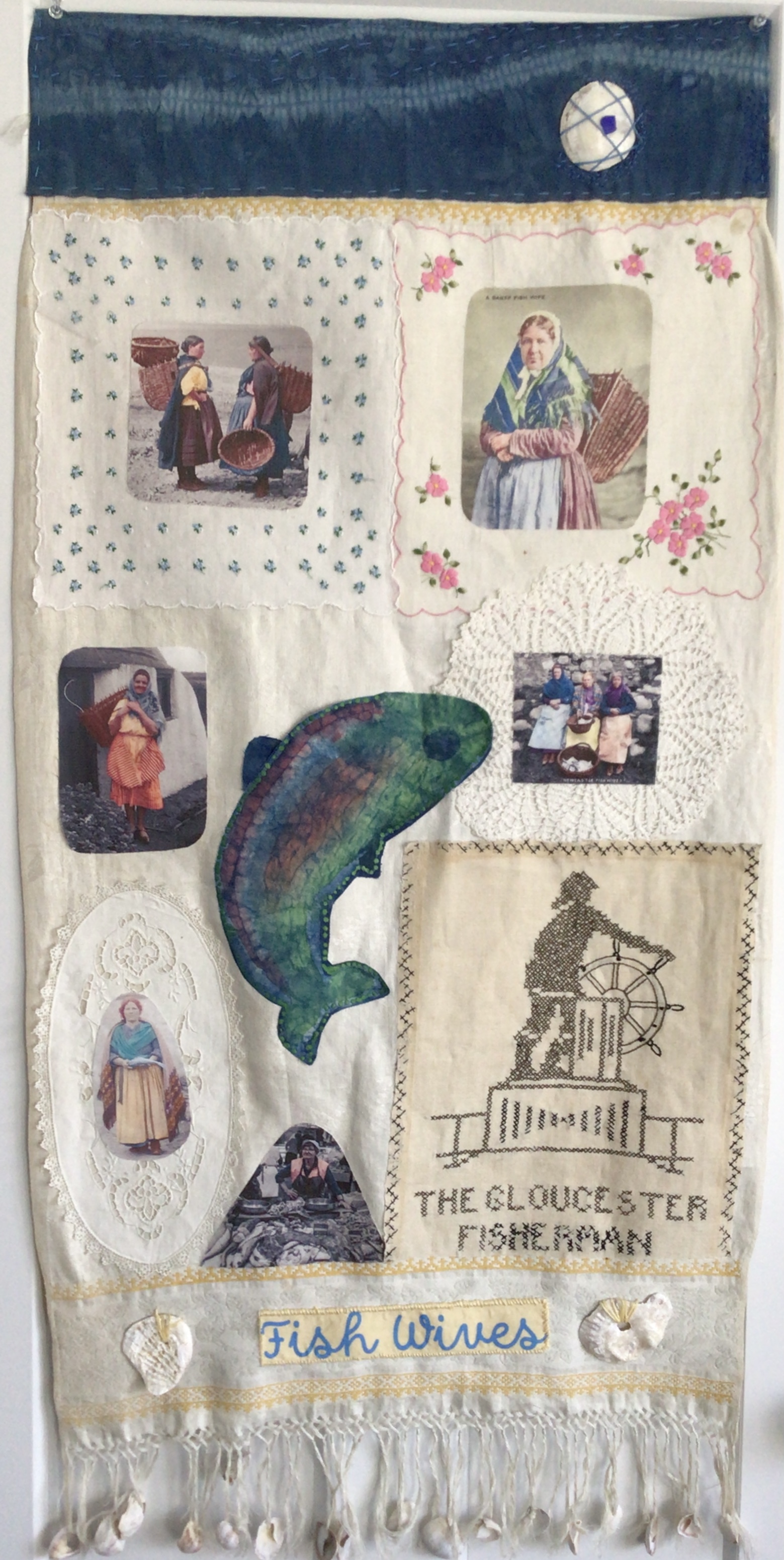
The themes explored in this exhibition are several: first, that women’s work, often unpaid and undervalued, is the backbone of the family, from childcare to domestic chores. Before the introduction of labor-saving devices, this work was all-encompassing, exhausting, and never-ending. Today, in two-income households, these tasks are often outsourced and figured into the family budget.
Second, the labor of women became a necessity during the World Wars when women entered nontraditional jobs, taking the place of the men at war. Women proved were as competent as men, as welders, mechanics, airline pilots, etc. The biases against women in the workforce were temporarily dissolved by war.
Third, women’s handwork (sewing, quilting, knitting, embroidery, etc.) is an undervalued form of artistic expression. For ladies of leisure, it was a pleasant pastime. For the lower classes, it was a necessity—sewing and knitting clothes for the family, repurposing old clothing into quilts and braided rugs. Much of this handwork is worthy of the title Art, but because of the medium (textiles) it was relegated to a lower rung on the art ladder. Many women artists in the twentieth century, like Judy Chicago, Faith Ringgold, Anni Albers and Louise Bourgeois, intended to obliterate these stereotypes. We are still ramming ourselves against these barriers.
The seed of an idea for this project began with the gift of a piece of lace cutwork from the bodice of a silk blouse which belonged to my neighbor who was downsizing for a move to California. The fabric of the blouse, passed down from her grandmother, had begun to disintegrate, but she could not part with the beautiful bodice. Contemplating a way to preserve this, l created a wall hanging entitled “Honoring the Sacred Feminine”. An idea about using vintage textiles in a larger story about women’s work began to percolate.
I have been collecting vintage linens for a while as well as creating my own textiles using various dyeing and printing methods. I wanted to use these fabrics to illustrate a story about all the work that women’s hands do. I learned about the Land Girls in Great Britain during World War II which inspired me to find other examples of women doing nontraditional jobs. This idea expanded into a desire to portray and honor all the work that women do, both paid and unpaid.
The medium I used, textiles, became the message, part of the story I intend to tell. Each textile is imbued with the spirit of the hands that created or embellished it. The photographs provided the story line. I purposely colored the photographs in bright, non-historical colors to pull the women to the foreground, in juxtaposition with some of the gray, industrial backgrounds.
As l work with these photos, l feel like l am getting to know these women, that we have a connection, especially when they are looking straight into the camera. I admire their stern concentration and pride in their work. They look strong and confident and accomplished. The camera has captured a moment in time that we must honor and cherish. With this exhibit l hope to elevate the phrase “women’s work” to a new level by honoring all the work women do and have done throughout history.
Women have always worked. Just as much, if not more than men. Today, a working mother comes home after 8 hours of work, and her second job begins—cooking dinner, doing a load of laundry, getting the kids ready for bed, and then doing the dishes before her head hits the pillow.
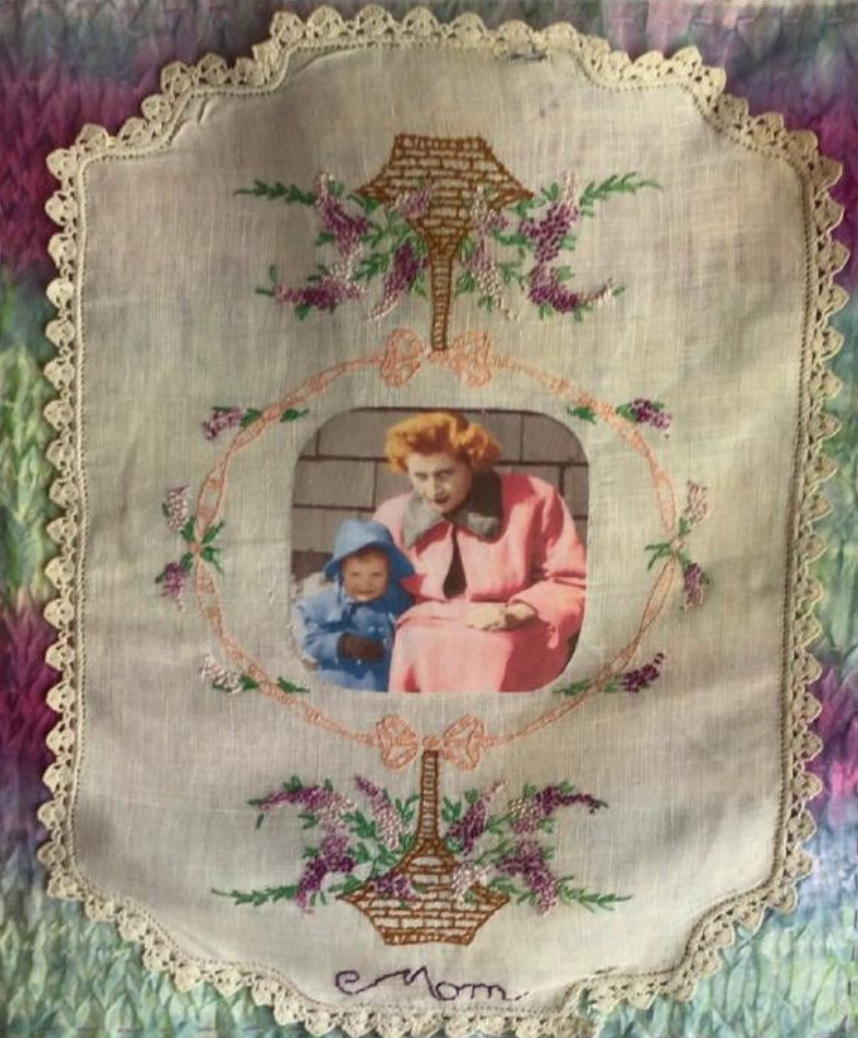
I can artfully create a textile memorial to your loved one who has passed on using photos and fabrics. You provide me with photographs and fabric items that were theirs, and I will design and lovingly construct a panel with your items and my additions of fabrics and stiching.
Minimum cost: $250 small (1 photograph) and $500 large.
If you are interested in purchasing a commission or have any questions, please contact me using the form below.